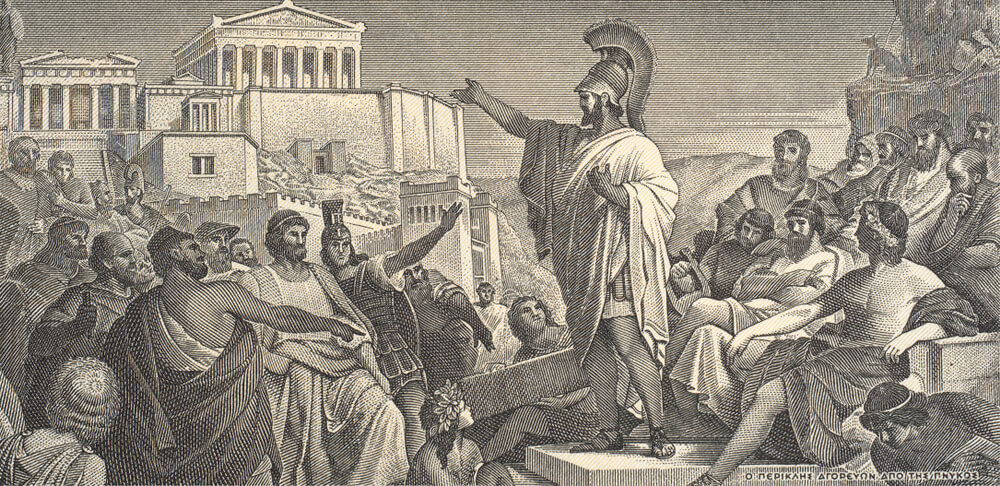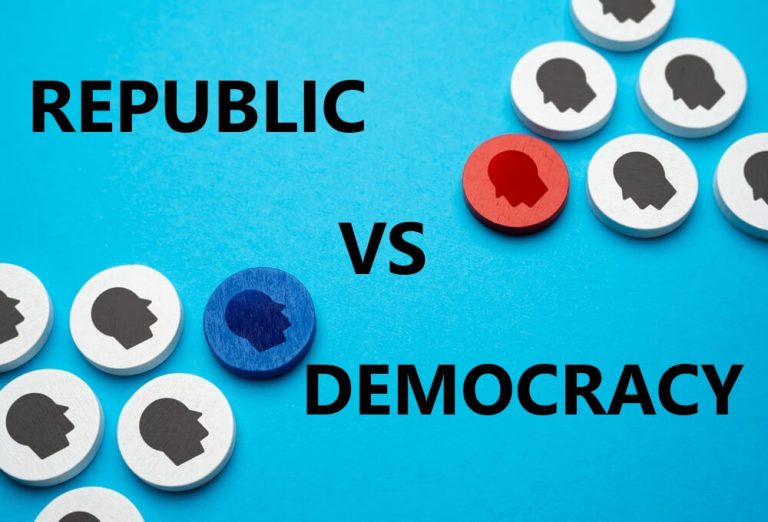In political discourse, “republic” and “democracy” are often used interchangeably but represent distinct concepts. This exploration examines their origins, differences like representative versus direct democracy, and the role of constitutions. It evaluates contemporary examples and debates on each system’s advantages and challenges in today’s governance.
Definitions of Republic and Democracy
When exploring the landscape of political systems, it’s essential to understand the foundational concepts of a republic and a democracy. These terms often appear in discussions about governance, yet they are frequently misunderstood or used interchangeably.
A republic is a form of government where the country is considered a “public matter” and is not the private concern or property of rulers. In this system, the head of state is an elected or nominated president, rather than a monarch. The core principle behind a republic definition is that it operates under a charter or constitution that protects certain inalienable rights against the majority, ensuring that even as leaders are chosen by election, their powers are limited by law.
On the other hand, democracy emphasizes rule by the people. In its purest form, known as direct democracy, all eligible citizens have an equal say in decision-making processes. More commonly seen today is representative democracy system, where citizens elect representatives to make decisions on their behalf. The democracy definition highlights governance based on majority rule while safeguarding individual rights through laws and institutions.
Both republics and democracies fall under broader categories of political systems known as types of government. While they share similarities such as electoral processes and citizen participation, their differences lie primarily in how power is structured and exercised within society’s framework. Understanding these distinctions helps illuminate how various nations craft their unique approaches to governance while adhering to democratic ideals.
The Historical Context (Origins and Evolution of Republics and Democracies)

The origins and evolution of republics and democracies are deeply rooted in the historical landscapes of ancient civilizations, particularly those of Greece and Rome. The history of democracy can be traced back to ancient Greece, where the city-state of Athens is often credited with developing one of the earliest forms of democratic governance. In this system, citizens had the opportunity to participate directly in decision-making processes, setting a foundational precedent for modern democratic practices.
Meanwhile, the history of republics finds its early expression in ancient Rome. Unlike direct democracy, the Roman Republic was characterized by a representative form of government where elected officials represented the interests of their constituents. This model emphasized a balance between different branches of government and laid significant groundwork for future political systems.
As centuries passed, these early frameworks evolved into what we recognize today as modern democracies. The principles established by ancient Greece and Rome were adapted and refined through various historical events such as the Enlightenment and revolutions that emphasized individual rights and collective governance. Modern democracies have expanded on these concepts by incorporating universal suffrage and more inclusive participation across diverse populations.
Understanding this historical context provides valuable insights into how contemporary political systems have been shaped by past ideologies. It highlights not only the enduring legacy of ancient governance models but also how they continue to influence current discussions about citizenship, representation, and equality within republics and democracies worldwide.
Main Characteristics That Distinguish a Republic from a Democracy
A republic and a democracy are often conflated, yet they encompass distinct principles that define their governance structures. Understanding the main characteristics that differentiate these two systems can help clarify their roles in shaping political landscapes.
In a representative democracy, citizens elect officials to make decisions on their behalf, reflecting the democratic principle of majority rule while ensuring practical governance across large populations. This system allows for efficient decision-making and accountability through regular elections. On the other hand, direct democracy involves citizens directly voting on laws and policies without intermediary representatives, embodying pure democratic principles where every individual has a direct voice in governmental decisions.
Republicanism principles emphasize the rule of law, protection of individual rights, and a government bound by a constitution designed to limit its powers. This framework is aimed at preventing tyranny by ensuring that no single entity or group holds unchecked authority. In contrast, democratic principles focus on equal participation and majority rule but may not inherently include mechanisms to protect minority rights unless integrated into the governing structure.
Both systems value citizen involvement but differ in execution: republics prioritize structured representation and constitutional safeguards, while democracies highlight direct public engagement in decision-making processes. Understanding these distinctions is crucial for appreciating how different nations implement governance to balance authority with liberty.
The Role of Constitutions in Republics vs Democracies
The role of constitutions in shaping the governance of both republics and democracies is pivotal, serving as the foundational framework that guides political processes and institutions. In constitutional republics, the constitution acts as a supreme legal document that establishes the rule of law, ensuring that government powers are limited and clearly defined. This system emphasizes the separation of powers among different branches of government (executive, legislative, and judicial) to prevent any single entity from gaining unchecked authority. By doing so, constitutional republics aim to protect individual rights and maintain a balanced distribution of power.
On the other hand, constitutional democracies also rely on constitutions to uphold democratic principles but place a stronger emphasis on majority rule while still safeguarding minority rights through legal protections. In these systems, the constitution serves not only as a blueprint for governance but also as a living document that can adapt to societal changes over time. The separation of powers remains crucial here as well, ensuring that democratic processes function smoothly without compromising individual freedoms.
Both systems underscore the importance of having a written constitution to provide clarity and stability in governance. While they share similarities in promoting rule of law and separation of powers, their approaches reflect different priorities in balancing governmental authority with citizen participation. Ultimately, constitutions in both frameworks strive to create an environment where liberty and justice can flourish within their respective political contexts.
Examples Around the World (Countries with Republican or Democratic Systems)
When exploring the political landscapes across the globe, it’s fascinating to observe how different countries adopt either republican or democratic systems, each with its own unique characteristics and governance structures. Understanding these systems provides valuable insights into how nations operate and make decisions for their citizens.
In a republican system, the country is considered a “public matter,” with officials representing the people and exercising power according to the rule of law. The United States is a prime example of a republic where elected representatives govern on behalf of their constituents. Other notable republican countries include France and India, both having established frameworks where leaders are chosen through elections to represent the populace’s interests.
On the other hand, democratic systems emphasize direct participation by citizens in decision-making processes. While many countries incorporate democratic principles within their republics, some nations are distinguished by more direct forms of democracy. For instance, Switzerland is renowned for its direct democracy practices, which allow citizens to vote on various issues frequently through referendums.
Comparing these systems with that of the USA reveals interesting contrasts and similarities. The USA operates as a federal republic with strong democratic traditions; however, it balances power between federal and state governments while ensuring individual rights through constitutional safeguards.
Both republican and democratic systems have their strengths and challenges but share a common goal: to serve and represent their people effectively while promoting stability and growth within society. As we examine examples from around the world, it becomes clear that each country’s adaptation of these principles reflects its historical context, cultural values, and societal needs.
The Debate Continues (Pros and Cons of Each System in Modern Governance)
In the ongoing debate over the most effective system of governance, republics and democracies often stand at the forefront. Each system comes with its own set of advantages and disadvantages, which continue to shape modern governance discussions.
One of the primary advantages of republics is their emphasis on a structured framework where elected representatives make decisions on behalf of the people. This can lead to more stable and consistent policy-making, as representatives are often experienced individuals who understand complex legislative processes. Furthermore, republics can protect minority rights more effectively by preventing majority rule from becoming tyrannical.
On the other hand, democracies boast direct participation from citizens in decision-making processes. This level of engagement ensures that government actions reflect public opinion more accurately, promoting transparency and accountability. However, one disadvantage is that democracies can sometimes face challenges such as populism, where decisions are swayed by short-term public sentiment rather than long-term benefits.
Both systems must navigate governance challenges today, including economic inequality, climate change policies, and technological advancements impacting privacy and security. The debate continues as societies strive to balance effective leadership with citizen involvement in a rapidly changing world.
Understanding the Differences to Foster Informed Civic Engagement
In conclusion, understanding the differences among various civic engagement approaches is crucial for fostering informed and active participation in democratic processes. Civic engagement encompasses a wide range of activities, from voting and volunteering to participating in community discussions and advocating for policy changes. By recognizing the unique contributions each form of engagement offers, individuals can better identify how they can contribute to their communities effectively.
Moreover, informed civic engagement requires an awareness of local issues, an understanding of governmental structures, and a willingness to collaborate with others who may hold differing viewpoints. This comprehensive approach not only strengthens democratic institutions but also empowers citizens to drive meaningful change in their communities. By embracing diverse methods of participation and encouraging open dialogue, we can create a more inclusive and responsive society that reflects the needs and aspirations of all its members.
Ultimately, fostering informed civic engagement involves continuous education and active involvement. As individuals become more knowledgeable about their rights and responsibilities as citizens, they are better equipped to make decisions that positively impact their communities. Through this ongoing process of learning and participation, we can build a more vibrant democracy where every voice is heard and valued.


